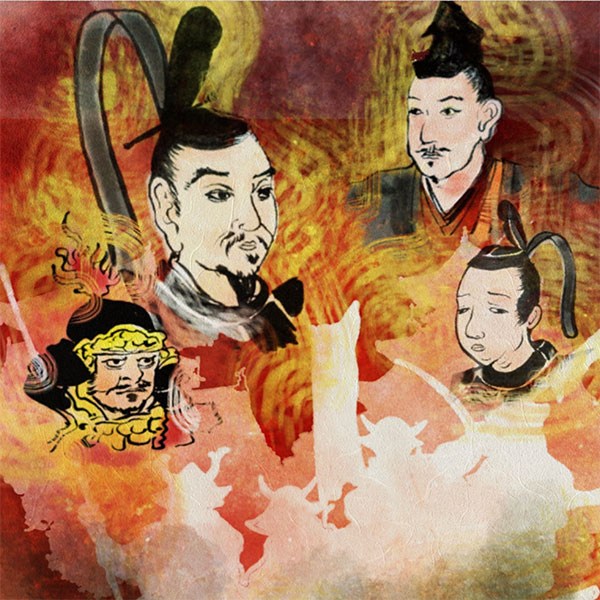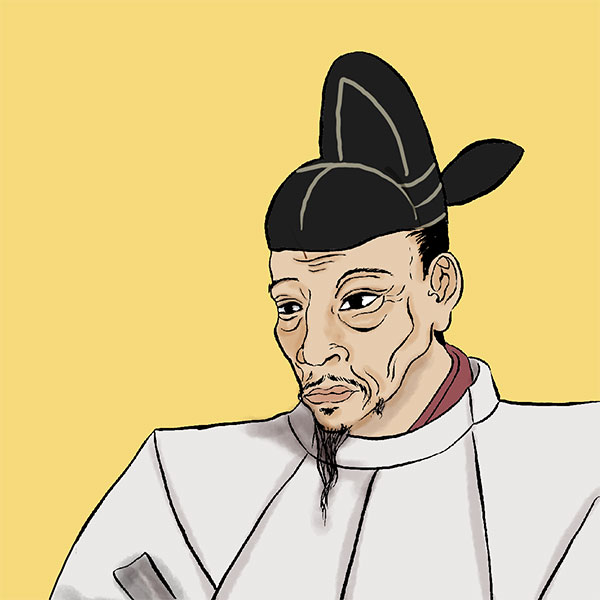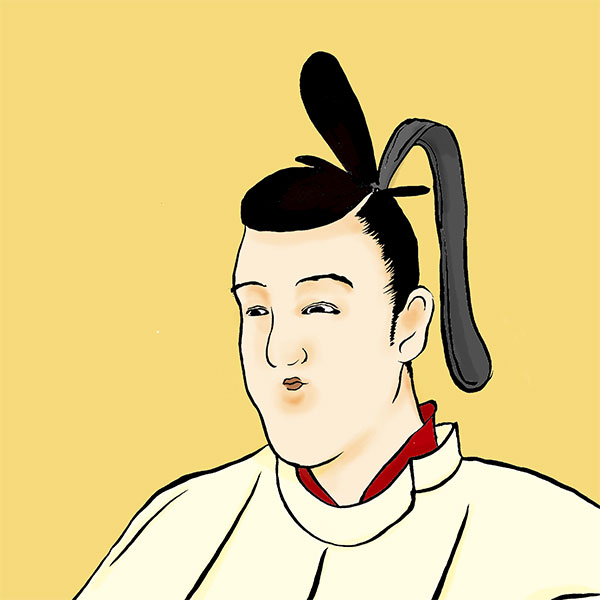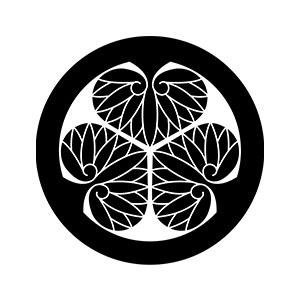- Fushimi DomainTokugawa Ieyasu's half-brother was the lord for one generation.
- Fushimi Domain is a domain that existed only before and after the Osaka Shogun. Tokugawa Ieyasu's half-brother Sadakatsu Matsudaira served as the feudal lord for only one generation, and soon after that the domain was abolished. Here, we will explain the outline of the Fushimi clan and why the land of Fushimi was considered important.

Fushimi Momoyama CastleKyoto, Kyoto Prefecture
| Other name | Momoyama Castle, Kobatayama Castle |
|---|---|
| castle construction | 1592 |
| address | 45 Okura, Momoyama-cho, Fushimi-ku, Kyoto-shi, Kyoto Prefecture |
- Access to Fushimi Momoyama Castle
- Approximately 15 minutes walk from Momoyama Station on the JR Nara Line.
HISTORYFushimi Castle was built three times
Fushimi Castle is a castle that was built three times by Toyotomi Hideyoshi and Tokugawa Ieyasu. It is also known as the castle where Toyotomi Hideyoshi met his end. It became an abandoned castle at the beginning of the Edo period, but some of the buildings were relocated to Nijo Castle and other locations. Let's unravel the history of Fushimi Castle.
- Shizuki Fushimi Castle
- The original Shizuki Fushimi Castle was built in 1591 by Toyotomi Hideyoshi in what is now Yahata City, Kyoto Prefecture, as a retreat after he handed over the title of Kanpaku and Jurakudai in Kyoto to his nephew Toyotomi Hideyoshi. It has been. In 1593, there are records of him having a meeting with Date Masamune and holding a tea party with Tokugawa Ieyasu, Maeda Toshiie, and others at this mansion. It is also believed that many townspeople moved from the castle town of Jurakudai, and place names such as ``Juraku-cho,'' ``Suzaku-cho,'' and ``Shinsenen-cho'' still remain in the surrounding area.
However, in the same year, peace negotiations with the Ming Dynasty began, and circumstances changed due to the need to show Ming envoys his authority as a ruler, and the birth of Toyotomi Hideyori, and the mansion was renovated into a castle.
Official construction of Shizuki-Fushimi Castle began in 1594. At the same time, improvements were made to the castle town, such as building a port leading to Osaka, building the Kokura Embankment that ran through Ogura Pond, and constructing a road on top of it to form the Nara Kaido. Masazane Sakuma was appointed as the construction magistrate, and stones and wood were collected from all over the country. The castle tower and turret were relocated from Yodo Castle.
During the construction of Shizuki Fushimi Castle, in 1595, an incident occurred in which Hidetsugu Toyotomi committed seppuku, and Jurakudai was abolished. Buildings were relocated from there as well, and Mukojima Castle, a branch castle of Fushimi Castle, was built on Mukojima.
In 1596, Shizuki-Fushimi Castle was almost completed and the castle town, including the residences of feudal lords, was in progress, when the Keicho Fushimi Earthquake occurred, causing major damage with the top two floors of the castle tower collapsing. Masu. As many people died within the castle, Toyotomi Hideyoshi and others built a temporary residence on Mt. Kobata, a hill located 1 km northeast of Shizuki-Fushimi Castle. This place later became Kobatayama Fushimi Castle. - Kobatayama Fushimi Castle
- Kobatayama Fushimi Castle is a castle that was built at a rapid pace by transferring building materials from Shizuki Fushimi Castle, which collapsed in the Keicho Fushimi Earthquake. Furthermore, there is an opinion based on later documents that the relocation to Kobatayama Fushimi Castle was planned even before the earthquake. It is recorded that the castle tower and palace of Kobatayama Fushimi Castle were completed in May 1597, and the tea house was completed in October of the same year, so the main buildings were completed a little over a year after the castle was built. It will be completed. During this period, the destruction of Jurakudai, the construction of Nagoya Castle, the construction of the Great Buddha Hall of Hokoji Temple in Kyoto, and the construction of Sannomaru of Osaka Castle were progressing simultaneously. This is an example of how powerful Toyotomi Hideyoshi's control and financial power were when he unified the country.
Toyotomi Hideyoshi moved to Fushimi Castle in 1597, when the castle tower was completed, and began a life of traveling back and forth between Osaka Castle and Fushimi Castle, but in his later years he spent more and more time at Fushimi Castle. He died at Fushimi Castle in 1598. - Fushimi Castle rebuilt by Tokugawa Ieyasu
- When Toyotomi Hideyoshi died of illness, Toyotomi Hideyori moved to Osaka Castle. Tokugawa Ieyasu moved to Fushimi Castle for a while as a rusuiyaku, but when he moved to Osaka Castle in September 1598, other feudal lords also moved to Osaka, and the town of Fushimi became deserted.
When Tokugawa Ieyasu set out to conquer Aizu in 1600, the Battle of Fushimi Castle, known as a prelude to the Battle of Sekigahara, broke out. The combined forces of Hideaki Kobayakawa and Yoshihiro Shimazu attacked Fushimi Castle, where Mototada Torii was the castle lord, and Mototada Torii was killed in the battle. It is recorded that Ishida Mitsunari, who took command of the war, burned down Fushimi Castle, and even today, there are several "blood ceilings" that are said to have been made from floorboards with blood stains from Tokugawa vassals, such as Yogen-in Temple in Higashiyama Ward, Kyoto City. remains in the temple.
After winning the Battle of Sekigahara, Tokugawa Ieyasu began rebuilding Fushimi Castle and building Nijo Castle in 1601. Takatora Todo, who was said to be a master of castle construction, was appointed as the fusho magistrate, and it is recorded that the reconstruction was almost completed by the end of the same year. The size of the castle was reduced somewhat, and the roof tiles, which included the Toyotomi family's paulownia gate, were reused. Along with the rebuilding of Fushimi Castle, the feudal lord's mansions were also redeveloped, and the newly appointed feudal lords moved to Fushimi.
In 1603, Tokugawa Ieyasu received the title of Shogun at Fushimi Castle, and from then on, he continued to receive the title of Shogun at Fushimi Castle until the third shogun, Iemitsu Tokugawa. In 1605, he met with Korean envoys at Fushimi Castle and restored relations with Korea, which had deteriorated due to Toyotomi Hideyoshi's dispatch of troops to Korea. In the same year, when Nijo Castle was completed, Tokugawa Ieyasu temporarily moved to Nijo Castle, but returned to Fushimi Castle. In 1606, when Sunpu Castle was rebuilt, Tokugawa Ieyasu moved there. At the same time, Sadakatsu Matsudaira, the half-brother of Tokugawa Ieyasu, became the castle owner of Fushimi Castle.
After the Osaka campaign ended in victory for the Tokugawa side, Fushimi Castle, along with Nijo Castle, was used as a place for the shogun to stay when he went to Kyoto. However, due to the shogunate's One Country, One Castle Order and the fact that it became difficult to maintain, Fushimi Castle was abandoned and the castle tower was relocated to Nijo Castle, and other buildings were relocated to Fukuyama Castle, Yodo Castle, etc. Fushimi Castle was demolished. The castle tower of Nijo Castle was destroyed by lightning in 1707, and only the castle tower remains today. In addition, with the castle being abolished, the temporary Fushimi domain was also abolished, but after that, the Fushimi Magistrate was established in this area, and it remained under the direct control of the Shogunate until the Meiji period. - Current Fushimi Castle
- When Emperor Meiji passed away in 1912, his body was buried at the site of the main enclosure of Fushimi Castle, which became the Fushimi Momoyama Mausoleum.
In 1964, after the Fushimi Castle Flower Garden, Fushimi Castle's small castle tower and turret gate were restored using reinforced concrete, and ``Fushimi Momoyama Castle Island'' was born, complete with a roller coaster and swimming pool. The amusement park closed in 2003, but the site became the Fushimi Momoyama Castle Sports Park, and has become a place of relaxation for citizens. The current mock castle tower does not meet the earthquake resistance requirements, so you cannot go inside, but it is used for filming movies, and it is a hidden cherry blossom viewing spot in the spring. - summary
- Fushimi Castle is the castle where Hideyoshi died and Tokugawa Ieyasu was declared the Seii Taishogun. The castle was abandoned in the early Edo period, and the site of the main enclosure became Emperor Meiji's Fushimi-Momoyama mausoleum, so there are no buildings left to remember those days. However, Fushimi developed as a famous place for sake brewing during the Edo period, and famous sake brewers such as Kizakura are still producing sake today.
Read about incidents related to Fushimi Momoyama Castle
- Battle of Fushimi CastleA fierce battle that could be called a “prelude” to the Battle of Sekigahara
- In mid-July of the 5th year of Keicho (1600), 40,000 Western troops led by Hideie Ukita and others attacked Fushimi Castle (present-day Fushimi Ward, Kyoto City, Kyoto Prefecture), which was guarded by Mototada Torii, a senior vassal of Tokugawa Ieyasu. The Battle of Fushimi Castle can be called a prelude to the Battle of Sekigahara. Mototada is

Read biographies related to Fushimi Momoyama Castle
History of the Fushimi clan, whose domain office is Fushimi Momoyama Castle
| Domain office | Fushimi Momoyama Castle |
|---|---|
| old area | Fushimi, Yamashiro Province |
| stone height | 50,000 koku |
| Fudai/Tozama | Parent clan |
| main lord | Matsudaira family |













